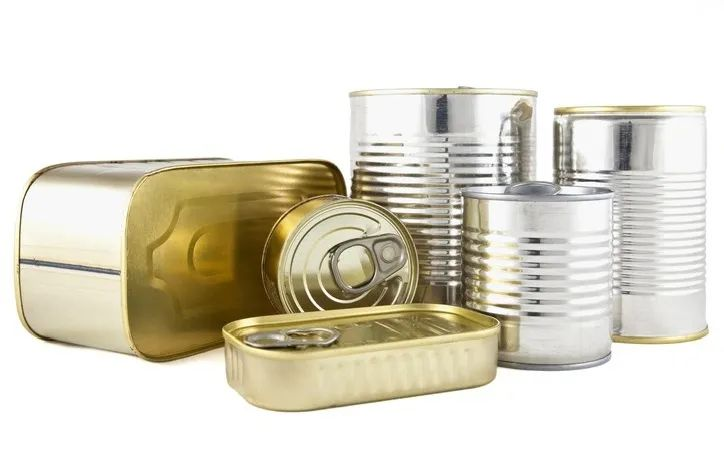Product features of tinplate
CONSMOS GROUP
Tinning or tinplating is the process of thinly coating sheet or strip of steel with tin (Sn), and the resulting product is known as tinplate. Tinplate is light gauge, cold-reduced low-carbon steel sheet or strip, coated on both faces withcommercially pure tin. It combines the strength and formability of steel and the corrosion resistance, solderability and good appearance of tin. Within this broad description, there exists today an extremely wide range of tinplate products, tailor-made to meet particular end-use requirements.

Tinplates are widely used for making various types of cans by soldering or welding. They are characterized by the attractive metallic luster. Tinplates with various kinds of surface roughness are produced by selecting the surface finish of the substrate steel sheet. They have excellent paintability and printability. Printing is beautifully finished using various lacquers and inks. Appropriate formability is obtained for various applications as well as the required strength after forming by selecting a proper temper grade. Also, appropriate corrosion resistance is obtained against container contents by selecting a proper coating weight.

Tinplate is used for making all types of containers such as food cans, beverage cans, and artistic cans. Its applications are not limited to containers. Tinplate has also been used for making electrical machinery parts and many other products.
Production of the steel base and its subsequent coating with tin are independent of each other, so that any set of properties in the steel, can in theory be combined with any tin coating. The composition of the steel used for tinplate is closely controlled and according to the grade chosen and its manner of processing, various types with different formabilities (also known as tempers) can be produced. Tinplate is sold in a range of steel thicknesses, generally ranging from around 0.15 mm to 0.6 mm.

The steel sheets can be coated with different thicknesses of tin. Even different thicknesses on the two faces (differential coatings) can also be produced to cater for varying conditions at the internal and external surfaces of a container. Several surface finishes are also produced for diverse applications. Tinplate has a special passivation treatment to stabilize the surface and improve adhesion of lacquers. It also carries a very thin film of an oil to improve its handling and fabrication properties. This oil is, of course, compatible with food products. The resulting wide variety of materials gives the user a great flexibility in choice and the ability to select precisely the right material for a given end use.

Tinplate is mainly used in cans, can ends, and closures mainly for glass bottles and jars.The oxidation of the tinplate followed by unavoidable migration of the tin ions formed into the food material is the physiochemical mechanism, known as the sacrificial anode effect, which protects the underlying steel from being corroded by the food material. The dissolution of the tin protects the can from possible perforation, and protects the contents from degradation (changes in colour and flavour) during heat sterilization and storage, which is having a typical shelf life of 2 years.